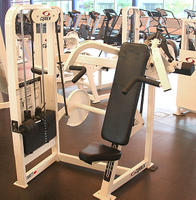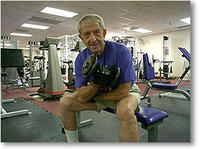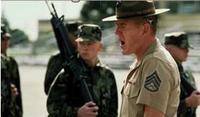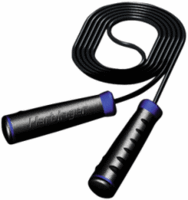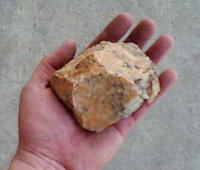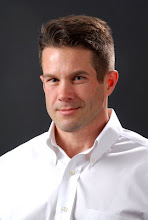So, why am I here? Better yet, why do I expect others to come here and take time to read my postings/opinions/rantings/etc.? While I cannot speak to what may cause people to listen to what I have to say, I can take the time to try and explain what I hope to accomplish.
Whenever I have interviewed people for job positions where I have the fortunate role of being the "chooser" rather than the "choose-ee", I have always asked a standard question that tells me a lot about the nervous person sitting in front of me:
"Tell me about something you do with PASSION that you do not get paid for."
Frankly, I do not care one bit what that activity might be. It might be gardening, scuba diving, investing or even spending time with their kids. What I am looking for is the raw ambition to achieve something where the experience of accomplishing it is just as important as the ultimate destination. It usually is something they have always done on the side, and if they could find a way for it to make them lots of money, they would do it full time. If the answer is nothing but stunned silence or some corporate-speak BS answer that resembles a good "butt kissing of the interviewer", that is a BIG red flag for me. Anyone can work hard if I pay them to, but they can be fickle. I want people who work hard because it is an ingrained part of their being. Sadly, the answers I would get from most people is sorely lacking of any substance.
My passion is harnessing the power and pleasure I get from intense training--both physical and mental. I believe that each of us are constantly being challenged by our
functional reserve (FR). FR is a simple concept I had described to me the first time I became a Certified Physical Trainer over 13 years ago. It is the difference between what we are truly capable of doing and what we
think we can do. The key to success in business, physical training and life is making sure we make our personal FR as small as possible.
For example, let's say your body is actually capable of running 5 miles. However, now that you are 40 years old, you think that 3 miles is the most you can do. After all, you have been told that running is hard on your joints, you are not the spring chicken you once were, and that comfy exercise bike is "just as good as running" according to your peers. So, you end up only running three miles because you have set mental limits that have physical manifestations. The power of your self-imposed limitations may actually make you feel "exhausted" after that 3 miles of moderate running. Your functional reserve is that 2 miles.
However, I bet that if someone changed the mile markers or lied about the length of the track, you could do more. Perhaps 4.5 miles? If you did accomplish such a feat, does it mean you became more fit in just one day? Of course not. You fought against your functional reserve--and won. Now, in this case, you tricked yourself. Perhaps you could do it more consciously by positive thinking and not setting self-imposed barriers to your success.
Likewise, in business, I train people to perform up to their ability in business development (a.k.a., sales). Many professionals do OK, but they are hindered by quotas (from their managers or themselves) as to how much revenue they can produce, appointments they can attend or relationships they can build. Sometimes, it is even influenced by their peers ("well, I go on more meetings than most other people in my company..."). Is there any logical reason a professional can only grow their book of business by a single digit percentage per year? How do you explain those that grow their book by 20, 30 or even 100% in a given year? Are they gifted? Maybe. Perhaps they just have not set artificial limits on themselves.
In these cases, I counsel people that they should focus on shrinking their functional reserve. For example, what if someone could has time to meet with great prospects 10 times a week, but they are currently only meeting with 8. The key to success is to get 2 more meetings (not 10). Ten might be too big a goal for them, but two is easy. It might require more training, less screwing around or many other factors. But, they should focus on shrinking the FR--then raise their goal to 12! The money will quickly follow.
So, this blog will concentrate on Rainmaker PT (personal training). As a twist on the usual blather you hear about rainmaking (the art of generating business for you and others), I will address issues of business AND physical fitness. Why? Because I argue that they are closely linked. Rainmakers are competitive, goal oriented and usually Type A personalities. However, they are also a little bit older and set in their ways. In addition, I believe that people that are physically at the peak of their ability have a better self-image, have more energy and feel they can take on the world. Show me a rainmaker carrying 50 extra pounds and a few years away from their first major illness, and I will show you someone who cannot possibly be achieving all they actually are capable of. They may be successful and even wealthy, but they can be richer, smarter and happier.
By coupling physical ability, intestinal fortitude and mental toughness, everyone can be truly strategic in their approach to life. The betterment of the body is the learning device that unlocks the brain power and energy that is holding them back.
So, if you would describe yourself as a former athlete or competitor (personal, weekend warrior or organized) that has become successful in business (a rainmaker), but feel you may have lost a step or two over the past few years, this blog is for you. You might feel you are missing that little spark to go to the next level. Honestly, the difference between good and great is just a few percentage points worth of effort. If you want to be great, keep reading.
You will see a mix of postings on business development and physical fitness. And, since even Michael Jordan needs to practice free throws every day, I will spend a lot of time on fundamentals. Some of the articles may seem like they do not relate to each other. How can running my multimillion dollar business and spending time exercising relate to each other? Think of it as mental fuel to shrink your functional reserve. You CAN achieve more than you ever thought possible---if you just would allow yourself to do so.
By unlocking the physical power state of your body and achieving goals to lead a healthier, happier life you will be better prepared to take on clients, competitors and naysayers. Why? Because you will have the energy and the belief that nothing can hold you back.


